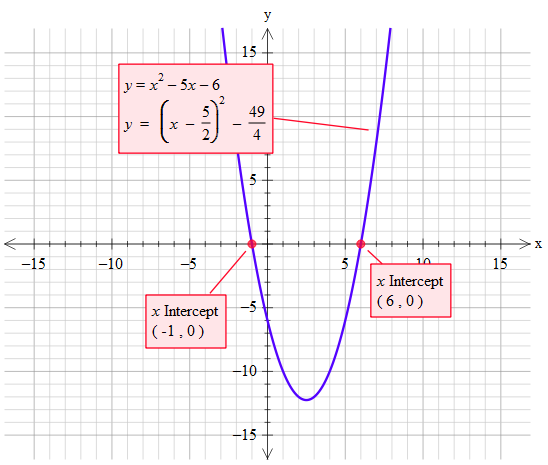How do you solve #x^2-5x-6=0# by completing the square?
2 Answers
Please do not change this solution. It is a reference solution.
Explanation:
Given the standard form
We end up with form
The problem is that changing the original equation to this form introduces an error. So
'~~~~~~~~~~~~~~~~~~~~~~~~~~~~~~~~~~~~~~~~~~~~~~~~~
Given:
Write as:
'...................................................................................................
Move the power from
'...................................................................................................
Discard the
'...................................................................................................
Halve the 5 inside the brackets
'...................................................................................................
Determine the value of
Let
So by substitution equation(2) becomes:
~~~~~~~~~~~~~~~~~~~~~~~~~~~~~~~~~~~~~~~~
Using
Vertex
'~~~~~~~~~~~~~~~~~~~~~~~~~~~~~~~~~~~~~~~~~~~~~
Add
Square root both sides
Add

As Tony B. states the answer is
Explanation:
In this method a different approach is used to complete the square. The idea is to show more clearly how the coefficient
Start with the expression
These expression is the same as the first two terms of the quadratic expression originally given. We render this as a difference of squares:
And then we match the two sets of factors:
Now add these two equations together and note that in eliminating
Then take the difference of the original two equations to get
This works because the original quadratic expression had a coefficient of
Then we have:
And the original equation becomes:
So we take both possible square roots noting that
If we did not have a perfect square the final answer would contain square roots.


